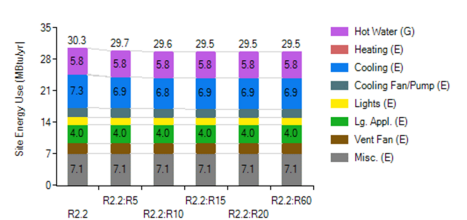W. Mark McGinley and Briana Kozlowski
i Professor and Endowed Chair, Dept. of Civil and Environmental Engineering, The University of Louisville, Louisville KY USA, m.mcginley@louisville.edu
ii Former Graduate Student, Dept. of Civil and Environmental Engineering, The University of Louisville, Louisville KY USA, briana.kozlowski@louisville.edu
ABSTRACT
Studies by the U.S. Department of Energy (DOE) indicates that about 30% of the energy used in the US is being used by the housing sector. Thus, energy efficiency in residential structures is a significant focus of energy efficiency and environmental impact efforts. Passive home design has grown in popularity as a good approach to reduce energy demand for heating and cooling. Passive design principles (superinsulation, airtight envelopes, elimination of thermal bridges, etc.) were pioneered in North America in the 1970s and 1980s and refined in Europe. These principles are thought to be universally effective in significantly reducing heating and cooling loads. Due to the high thermal mass of concrete masonry walled homes, traditional passive house design methods were felt to underestimate the impact of these high mass walls have on the heating and cooling demand of the homes. Thus, an investigation was conducted to evaluate the energy performance of a typical residence that uses exterior concrete masonry wall systems using holistic energy analyses. Within this study, a typical home placed in the seven climate zones of the US was assessed using holistic energy modeling software and analyzed for their energy efficiency and costs. This paper presets the key findings of this investigation. The study showed that prototype home could be modified to reach passive home performance with wood stud walls with high levels of insulation, in all climate zones. The analysis also showed that in most climates increasing wall insulation was needed to achieve the fixed 53.95 kJ/2 (4.75kbtu/ft2 ) cooling and heating energy limits for passive house performance but more insulation had a decreasing impact on energy use, especially in warmer climates. The study also showed that passive home designs can be achieved with CMU exterior walls and increasing wall insulation was needed to achieve the fixed cooling and heating energy limits for passive house performance but increasing values of insulation had a much lower impact on energy use than with the wood stud wall systems, especially in warmer climates.
KEYWORDS: Masonry walls, energy use, passive house, optimum design.
006-McGinley.pdf



